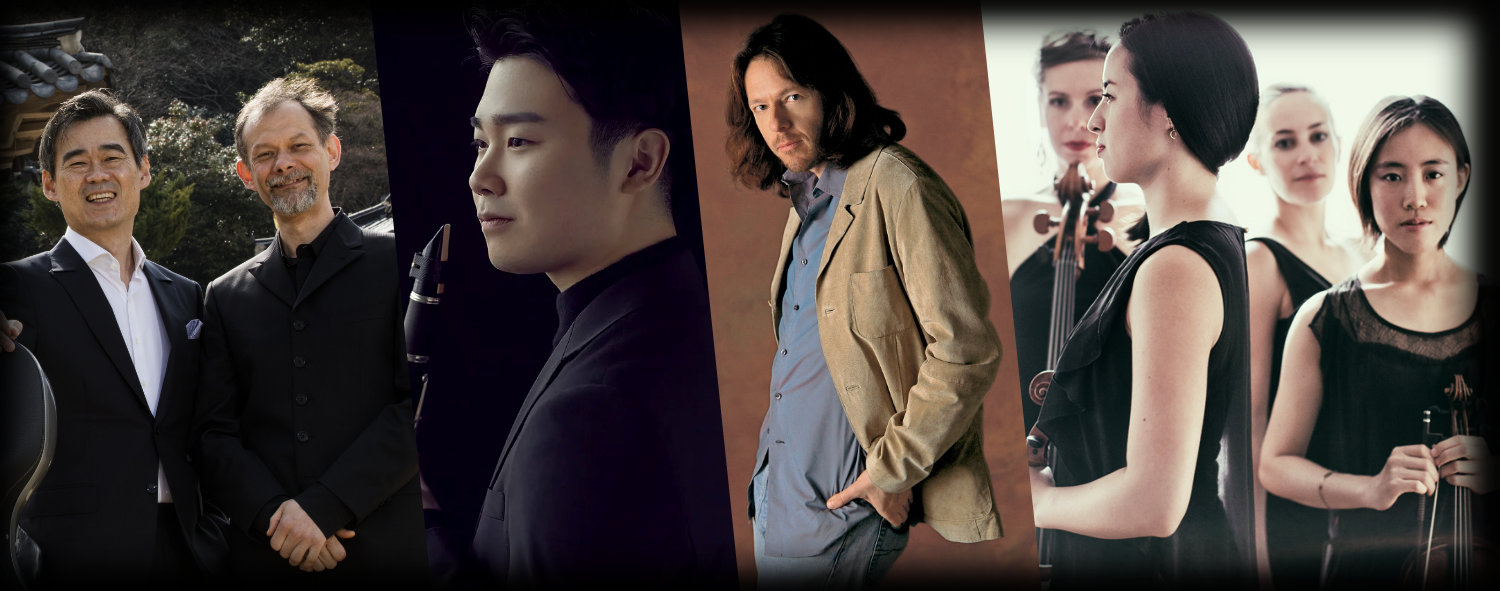
Janáček, Pohádka, a tale for cello and piano
Sung-Won Yang, cello
Enrico Pace, piano
“Pohádka” (“A Tale”) is a captivating piece for cello and piano composed by the Czech composer Leoš Janáček. Written in 1910, the work is inspired by the Russian fairy tales of Vasily Zhukovsky. It consists of three movements, each depicting a different fairy tale character or scene. The piece is characterized by its lyrical melodies, folk-inspired rhythms, and rich harmonic language, showcasing Janáček’s distinctive musical voice. “Pohádka” is a beautiful and evocative work that transports the listener to a world of enchantment and wonder, for cello and piano.
- Con moto – andante
- Con moto – adagio
- Allegro
Brahms, Trio pour piano, clarinette et violoncelle en La mineur Op. 114
Frank Braley, piano
Han Kim, clarinet
Sung-Won Yang, cello
Brahms first heard the clarinettist Richard Mühlfeld while visiting Meiningen in March 1891. So taken was he with Mühlfeld’s beautiful, vibrato-rich playing in Mozart’s Clarinet Quintet and various orchestral works he retracted his declaration to have stopped composing and produced a Clarinet Trio and Clarinet Quintet (Clarinet Sonatas followed a few years later). Both Trio and Quintet were performed privately in Meiningen on 24 November 1891, with Brahms at the piano and Joseph Joachim’s quartet; the first public took place in Berlin on 12 December.
Brahms apparently preferred the more enigmatic Trio to the popular Quintet. The first movement pulls between its opening lyrical melody, introduced by cello and clarinet, and most tempestuous figuration. The harmonies constantly turn away from major to minor until the end of the movement which alights on A major, leading to the D major of the fulsome Adagio. While the third movement might be a scherzo it is gentle in tone and tempo, marked Andantino grazioso. The minor mode returns, inescapably, in the final Allegro.
intermission
Dvorák, Quintette No. 2 pour piano et quatuor à cordes en La Majeur Op. 81
Frank Braley, piano
Quatuor Ardeo
Chamber music was central to Antonín Dvořák’s output, from his first compositions in the 1860s to the end of his career, perhaps reflecting that he was a viola player. One of the only breaks in production was in the mid-1880s, when he concentrated for a few years on commissions for Brahms’s publisher, Simrock. After that he composed some small-scale character works – a Terzetto, Drobnosti (Miniatures), and an arrangement of part of his song cycle Cypresses for string quartet as Echo of Songs. But then, he composed one of his most celebrated works, the second piano quintet in A major, op. 81, first performed in Prague on 6 January 1888. The four movements demonstrate the melodic beauty, rhythmic vitality, and formal clarity of Dvořák’s mature style: from the leisurely theme that starts the Allegro, ma non tanto, to the characteristically ‘furiant’ Scherzo; through to the contrapuntal elan of the finale. The second movement, ‘Dumka’, predates Dvořák’s Piano Trio op.90 the ‘Dumky’ by two years. The composer was particularly associated with this Slavonic genre typically featuring a slow and melancholy melody with contrasting sections that owe something to folk music.